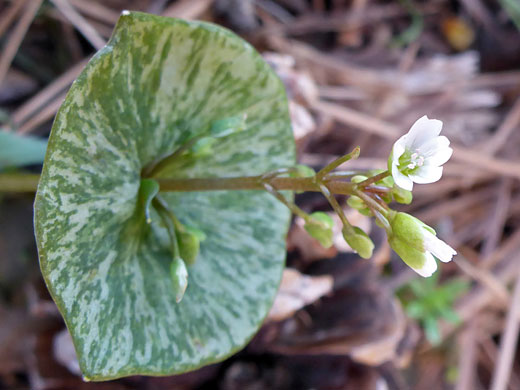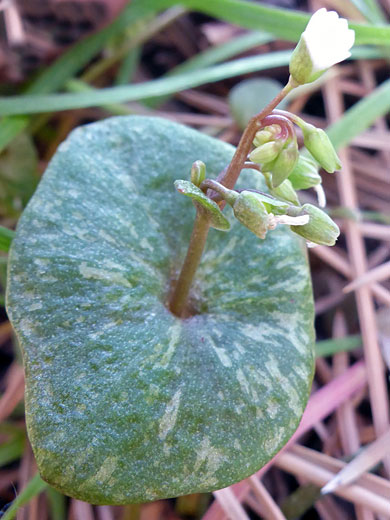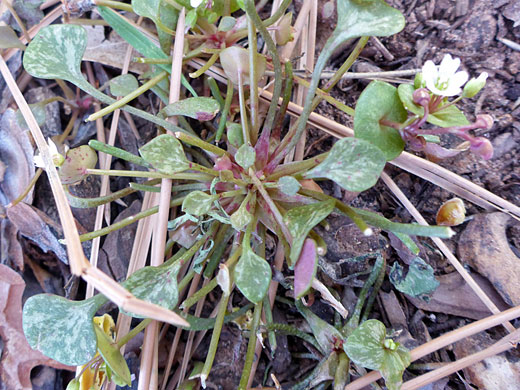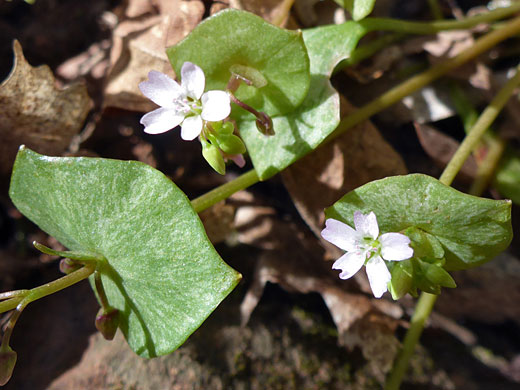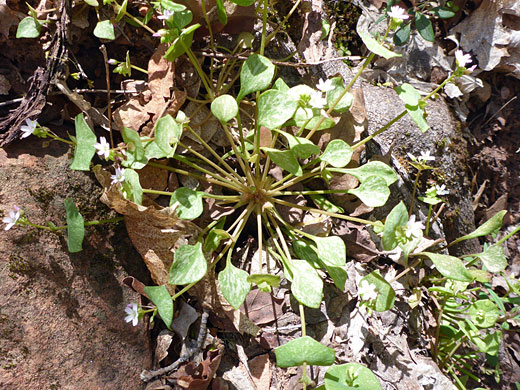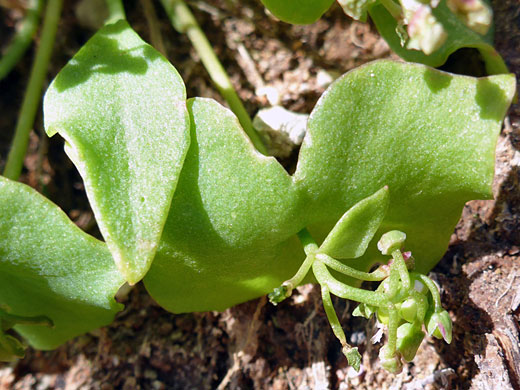
Five notched white petals; flower of claytonia perfoliata, Kolob Arch Trail, Zion National Park, Utah
Common names:
Miner's lettuce, Montia perfoliata
Family:
Scientific name:
Claytonia perfoliata
Main flower color:
Range:
All areas west of the Rocky Mountains
Height:
Up to 20 inches
Habitat:
Woodland, waste ground, roadsides, pasture, from near sea level to 7,000 feet
Leaves:
Basal: elliptic to kidney-shaped, up to 1.5 inches long, on flattened stalks of up to 8 inches. Cauline: fused into approximately round or square discs, up to 3 inches across
Season:
February to July
Claytonia perfoliata is widely distributed across the West, especially in Arizona and California. Plants are generally small, though variable in height, from just one inch to 20 inches. There are two types of leaves; those at the base have long stalks (of differing lengths), and form a rosette, while those up the stem occur in pairs, generally fused to form a disc or polygon, with the stem through the center (perfoliate). The green leaf surfaces often have a mottled lighter pattern, while the blade and stem of the basal leaves may be flecked with red. Basal leaves are generally ascending rather than flat.
Flowers are formed of five green sepals and five slightly longer (up to a quarter of an inch) white or pale pink petals, often notched at the tip. The five stamens have white filaments and pale pink anthers.
Three subspecies have been identified. Ssp perfoliata (north Utah and the Pacific states) has generally erect basal leaves, and more disc-like cauline leaves, the most widespread ssp intermontana has more flattened basal leaves, with ovate blades, often colored purple-red, while ssp mexicana (mostly found in west Arizona and coastal regions of California) also has flattened basal leaves, with triangular, green blades.
Flowers are formed of five green sepals and five slightly longer (up to a quarter of an inch) white or pale pink petals, often notched at the tip. The five stamens have white filaments and pale pink anthers.
Three subspecies have been identified. Ssp perfoliata (north Utah and the Pacific states) has generally erect basal leaves, and more disc-like cauline leaves, the most widespread ssp intermontana has more flattened basal leaves, with ovate blades, often colored purple-red, while ssp mexicana (mostly found in west Arizona and coastal regions of California) also has flattened basal leaves, with triangular, green blades.
All Contents © Copyright The American Southwest | Comments and Questions | Contribute | Site Map

